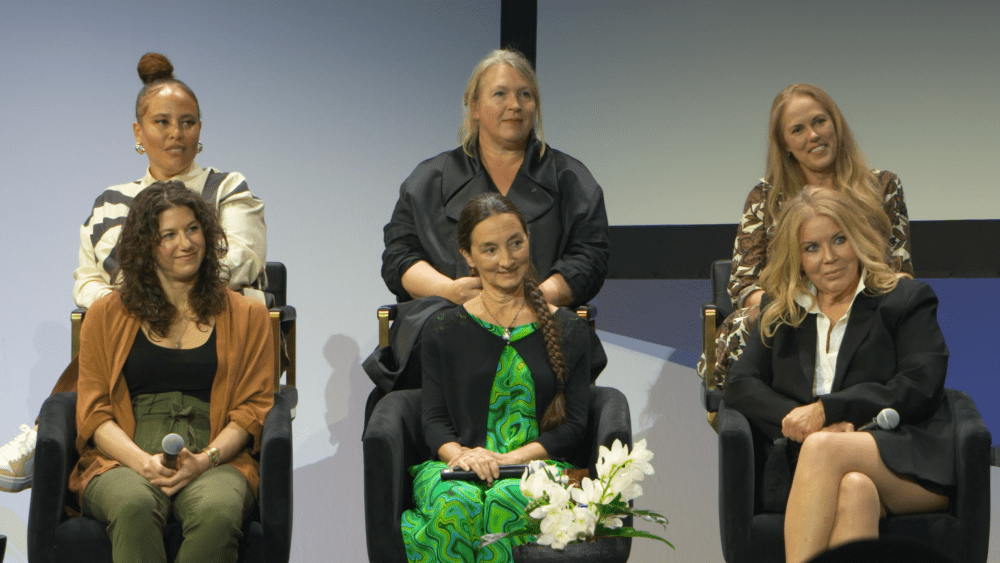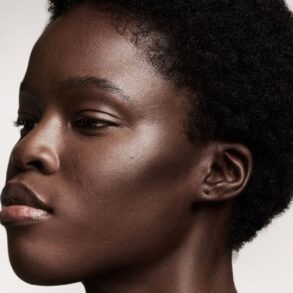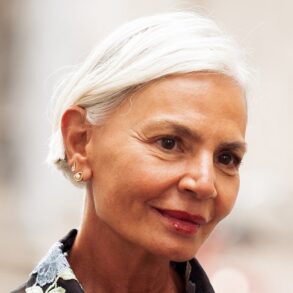
On Aug. 3, Prime Video and Variety collaborated to host Master Crafts at NYA Studios East, an event featuring the Emmy-nominated artisans behind Prime Video’s shows.
Moderated by Variety’s senior artisans editor Jazz Tangcay, the five panels included “Music to Our Ears,” with music supervisors, sound editors and mixers; “World Building” with cinematographers, production designers and a VFX supervisor; “Looking the Part,” with costume designers and makeup artists; “Names and Faces” with casting directors; and “The Final Cut” with producers.
The creatives behind critically acclaimed shows such as “The Marvelous Mrs. Maisel,” “Daisy Jones and the Six,” “Jury Duty,” “Swarm,” “The Lord of the Rings: The Rings of Power,” “Judy Blume Forever,” and “Dead Ringers” participated in the event. Speaking on a wide range of topics, the panelists drew back the curtain on some of this year’s most popular shows and explained how they brought them to life on screen.
Here are the five biggest takeaways from Master Crafts:
“Music to Our Ears”: Small Details Make a Big Difference
The artisans featured on the “Music to Our Ears” panel discussed how important small details are when crafting a soundscape.
Robert Stambler, the supervising sound editor on “Rings of Power,” discussed a volcanic eruption that required a colossal amount of bass. The finishing touch, however, was something far more delicate: “I put in the sound of a flock of birds going away. It’s like that little cherry on top of this immense bass cake that, to me, sells it and makes it feel real,” Stambler said.
Elsewhere, working on “The Marvelous Mrs. Maisel,” creator Amy Sherman-Palladino tasked songwriting duo Thomas Mizer and Curtis Moore with writing the original song music and lyrics nominated song, “Personal Trash Can Man.” Not only did the duo have to find words that rhymed with trash, they had to find words that rhymed with “private waste management,” recalled Moore.
Not only that, they had to find a song and pen lyrics that would seamlessly blend into the comedy aspect of the show.
“Maisel”’s music supervisor Robin Urdang unpacked a scene in which an orchestral version of “Till There Was You” plays quietly during an emotional moment between Midge (Rachel Brosnahan) and Lenny Bruce (Luke Kirby); it calls back to an earlier moment in the show when they danced to another version of the same song. For the scene where it plays again at the airport, the moment was the last time they saw one another, so the music cue was important.
“It was very subtle, it’s not a big music moment. But it did something to a lot of people that know and love the show,” Urdang said.
Moore pointed out the show doesn’t have a composer and highlighted the importance of Urdang’s cues. He said, “Maisel has none of that. It’s only needle drops unless it’s original music. So, everything we do is diegetic. She’s doing a huge heavy lift that is way more so than most shows because the only way to score the show is through music needle drops.”
“Maisel”’s production sound mixer Matthew Price explained of his job: “My primary task is to capture vocal performance.” He outlined how much effort goes into getting clean recordings on such a dialogue-driven show.
One sequence where Susie is on a golf course, Price says it was important to ensure he had the golf course dialogue. The challenge he says was “getting the dialogue clean which of course was right next to a highway.”
Since “Daisy Jones and the Six” features the titular band writing, recording, and touring their album, the show involves plenty of live performances; the final episode depicts a sold-out concert at Chicago’s Soldier Field.
“It’s basically 10 cues of live music that we’re working with and it is just a balance of pre-recorded tracks, live on-stage drums or elements from production, and blending it all together to make it sound like it’s all there,” re-recording mixer Lindsey Alvarez explained.
The “Daisy” crew was also working with only 100 extras that they moved around to resemble a crowded arena of thousands.
Their challenge was how to shoot it and create a wall of sound with thousands of people singing. Music supervisor Frankie Pine said, “It was important to get that live quality across and make it feel like you’re actually there.”
“Worldbuilding”: Research is Essential
The panelists emphasized that worldbuilding starts with extensive research.
“Even with a fantasy show…the research actually becomes the critical thing that helps it to look real. We like finding the surprising thing that you kind of want to erase and then keep that, or emphasize it…that little bump on something that’s unexpected, that to the audience is usually what makes it look real,” “Rings of Power” VFX supervisor Jason Smith said via Zoom.
For “Dead Ringers” cinematographer Jody Lee Lipes, which stars Rachel Weisz as a pair of twins, the series was his second time working on a “twinning” project.
“The idea is you shoot one side of a shot and then you shoot another,” he said and explained how the technology “motion control” works in the process of twin cinematography.
He explained the process of capturing Weisz. “The first time you shoot it with Rachel, she is one character. When we do it the second time, Rachel plays the other character and the camera is doing the same thing. And we just need to make Rachel fit into what we already did.”
Meanwhile, on the “Daisy Jones” set, the crew in New Orleans had a limited amount of time to build a stage resembling Chicago’s Soldier Field.
“We had a total of 10 days and were shooting five of them. So we ran crews 24/7 for the first three and 24/7 for the last two…essentially, yeah, we had that up in three days,” production designer Jessica Kender shared.
Even a tornado couldn’t stop the crew from pulling off the recreation of the venue. “We had a tornado that happened during all of this. So I learned about what you do with a stadium tour when a tornado hits and rips the roof off,” Kender said, who spoke with friends who had toured with Jay-Z and other artists.
The panelists also stressed the importance of collaboration in the worldbuilding process.
“The collaboration, as one of the actors described, is a collaboration of shared sensibilities. And we just kind of surprise ourselves sometimes that we come up with the same color palette and the same approach to things,” “Maisel” production designer Bill Groom said.
“Maisel” director of photography M. David Mullen outlined how he and the crew actualized Sherman-Palladino’s vision of a complex one-shot sequence that spanned multiple floors and rooms.
“I’d thrown out, well maybe we could sort of crane up to the second floor and then disconnect at one point and lock the camera. And then she wanted to go down the next…staircase. So I said, well, I have to reconnect to a second crane. And knowing that was very complicated, she wanted to do a rehearsal,” he explained.
“Looking the Part”: How to Visualize an Aesthetic
Prime Video’s shows span from 1970s Los Angeles to the fantasy realm of Middle Earth — and many worlds in between, all with varying aesthetics.
“Swarm” costume designer Dominique Dawson was tasked with curating the wardrobe for a Houston-based series about an obsessed fan-turned-serial killer.
“I definitely just jumped into the horror pool and just watched every horror movie where women are killing. That was first,” Dawson said. “And then I really wanted to jump into the Houston culture and really get a sense of the vibe of Houston.”
Much like other aspects of filmmaking, creating a character’s aesthetic is also a collaborative process. “Daisy Jones” costume designer Denise Wingate and head of makeup Rebecca Wachtel worked closely together in curating the band’s looks. For example, Daisy (Riley Keough) looks gorgeous but disheveled in a sparkling, flowing outfit and smudged eye makeup during the band’s climactic final performance.
“[Denise] was a huge inspiration…especially when it gets into someone being a rock star, what they’re gonna look like or wear makeup-wise plays off of the costumes,” Wachtel said.
Costume designer Kate Hawley and prosthetics off-set supervisor Dan Perry on “Lord of the Rings” also worked together to bring the creatures of Middle Earth to life.
“Talking about collaboration and how you create a character together…you couldn’t always see where the creature began and ended, or where the clothing began and ended,” Hawley said.
Research is also fundamental to the process of visual storytelling.
“I like to think of the office as a nexus of research. And it’s something that began five years ago and it just grew and grew and grew. It began with early period research…being from New York, I was really interested in getting that right and seeing what the fifties and sixties were like,” costume designer Donna Zakowska of “The Marvelous Mrs. Maisel” said.
To create the looks for the final season of “Maisel,” department head hairstylist Kimberely Spiteri looked through Zakowska’s “library” of Vogue magazines, and makeup department head Patricia Regan also noted that she looked online and in books and magazines for inspiration.
“Names and Faces”: The Importance of an Open Mind
A character isn’t fully brought to life until the right actor embodies them. Justine Arteta and Kim Davis-Wagner of “Daisy Jones and the Six” and Susie Farris of “Jury Duty” unpacked what the job of a casting director looks like.
The comedy “Jury Duty” became a fan favorite for its premise in which an ordinary man, Ronald, believes he is serving as a real juror on a trial, not knowing that everyone else in the courtroom is a paid actor. Farris explained what it was like casting an unconventional show without a pre-determined list of characters.
“So basically it was a blank canvas, which is daunting. But it’s also so freeing and it’s exciting to be able to find some of your favorite people to bring into the process rather than having to try to find actors to conform to certain characters or roles that you need for a show,” she said.
As part of the casting process, the show’s producers set up a focus group. “It was set up by a focus group company. They brought in half the group of people who were just regular people and the other half were actors. The regular people were not told that there were any actors in there. They thought they were just getting paid to do a focus group and the actors were not told who the other actors were. They were just supposed to interact and we could see who could quick thinking on their feet and how they handle themselves in a group and who could still bring a special presence,” Ferris told the crowd.
Meanwhile for “Daisy Jones,” Arteta and Davis-Wagner needed to find just the right person for the titular character, auditioning countless people who could both sing and act — enter Riley Keough.
“Her voice is not perfect, but it’s so beautiful and so that was Daisy,” Arteta said.
Casting also requires open-mindedness to unexpected actors.
In the case of Josh Whitehouse, he came in and auditioned for Billy. Said Arteta, “It was very clear to all of us that he was Eddie, and he was open to it.” Arteta added, “And he’s a musician.”
“What’s really interesting about casting is that you can have a thought in your mind about what that character might look like, feel like age-wise, but you also open up and see all different people. And the most beautiful thing in our job is when somebody that maybe doesn’t immediately [match the description], but there’s something about them, there’s something about them that could be this character,” Arteta explained.
And how do casting directors handle the pressure of finding the right actor when adapting a book with a beloved fanbase, as was the case with “Daisy Jones and the Six”?
“I’ll just speak from my perspective…we didn’t really pay attention to the pressure. Like we just know that we got the opportunity to do a job and we just jumped in feet first and just went for it,” Davis-Wagner said.
“The Final Cut”: Finding a Human Story
The final panel featured Sara Bernstein, producer of the documentary“Judy Blume Forever,” Lauren Levy Neustadter, executive producer of “Daisy Jones and the Six,” and David Bernad, executive producer of “Jury Duty.”
Bernad revealed that the search for Ronald began with a Craigslist ad that roughly 3000 people responded to. The large group was slowly narrowed down by producer Alexis Sampietro until Ronald was chosen as the star.
“…We really wanted someone that evoked the qualities we were looking for, which was someone that would be heroic and someone that would enter into this situation. And the hope was for that person to then become the hero of the story and really get to this ’12 Angry Men’ moment where they were going to fight for the innocence of this defendant,” Bernad explained.
In addition to casting, producers can also play a role when it comes to shooting on location. How did “Daisy Jones” accomplish the feat of shutting down the Pacific Coast Highway and Sunset Boulevard for shooting? Neustadter said it involved “a lot of hard work” and praised the production designer, location scout Jay Traynor, the set deck team, and the producer team including line producer Mike Nelson.
“We shut down the Sunset Strip and Jess Kender brought it back to the seventies. We shot at the whiskey, we shot at the Troubadour, we shot on the PCH, we shot everywhere,” she said.
Speaking on “Judy Blume Forever,” a film about the life and work of the beloved author, Bernstein discussed the role of timing when producing a documentary — a story can resonate unexpectedly as cultural and political tides shift.
“…When we started this project on Judy, the world was in a bit of a different place. We didn’t have the extreme book banning that was happening by the time the documentary came out this last spring, at least not at a political level. Same with sex education. So when we started, we didn’t actually realize how incredibly relevant Judy’s story and certainly her life’s work would become to an audience when they were able to finally see it on Amazon Prime,” Bernstein said.
This post was originally published on this site be sure to check out more of their content.








